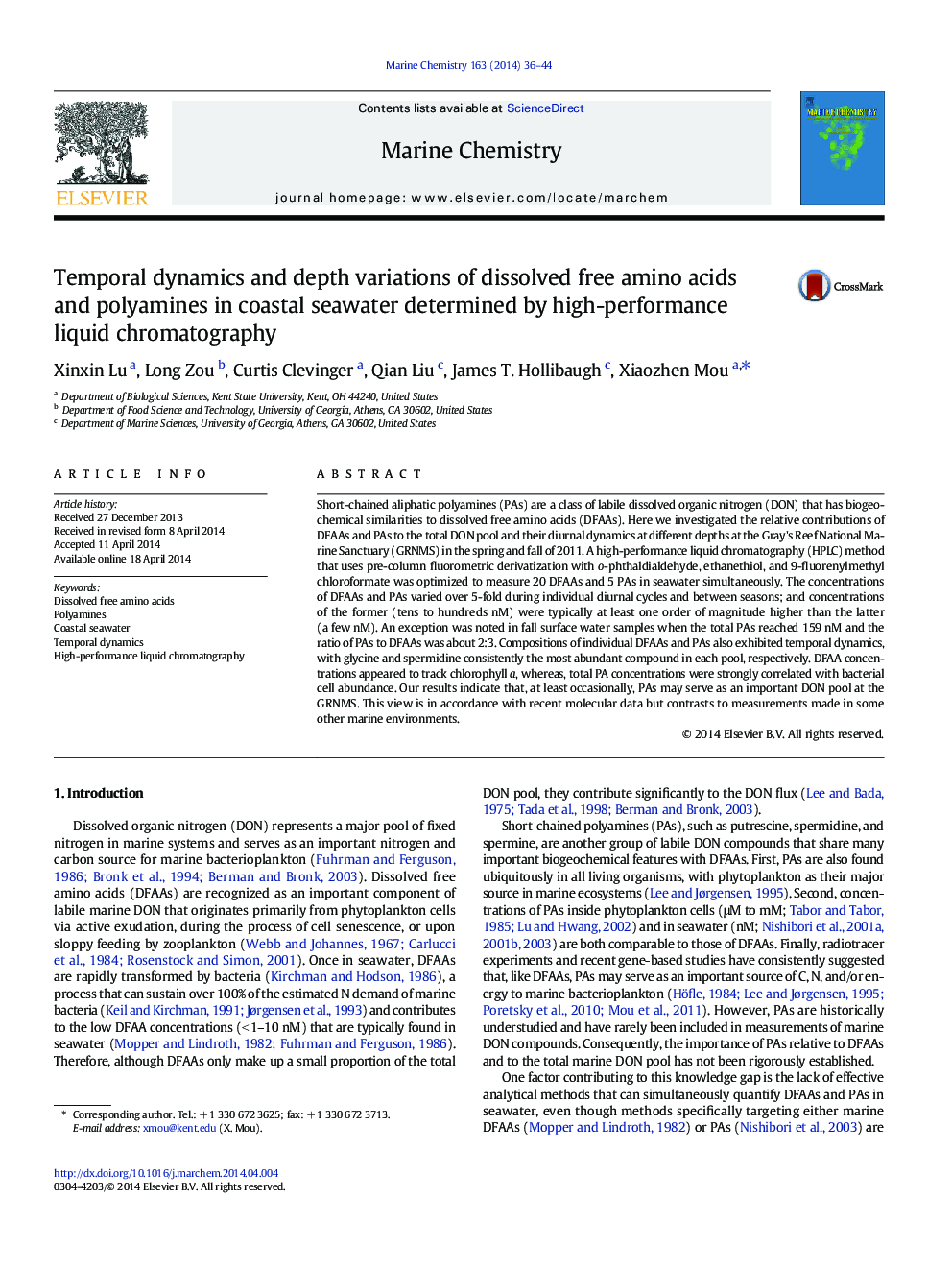| Article ID | Journal | Published Year | Pages | File Type |
|---|---|---|---|---|
| 1262868 | Marine Chemistry | 2014 | 9 Pages |
Short-chained aliphatic polyamines (PAs) are a class of labile dissolved organic nitrogen (DON) that has biogeochemical similarities to dissolved free amino acids (DFAAs). Here we investigated the relative contributions of DFAAs and PAs to the total DON pool and their diurnal dynamics at different depths at the Gray's Reef National Marine Sanctuary (GRNMS) in the spring and fall of 2011. A high-performance liquid chromatography (HPLC) method that uses pre-column fluorometric derivatization with o-phthaldialdehyde, ethanethiol, and 9-fluorenylmethyl chloroformate was optimized to measure 20 DFAAs and 5 PAs in seawater simultaneously. The concentrations of DFAAs and PAs varied over 5-fold during individual diurnal cycles and between seasons; and concentrations of the former (tens to hundreds nM) were typically at least one order of magnitude higher than the latter (a few nM). An exception was noted in fall surface water samples when the total PAs reached 159 nM and the ratio of PAs to DFAAs was about 2:3. Compositions of individual DFAAs and PAs also exhibited temporal dynamics, with glycine and spermidine consistently the most abundant compound in each pool, respectively. DFAA concentrations appeared to track chlorophyll a, whereas, total PA concentrations were strongly correlated with bacterial cell abundance. Our results indicate that, at least occasionally, PAs may serve as an important DON pool at the GRNMS. This view is in accordance with recent molecular data but contrasts to measurements made in some other marine environments.
